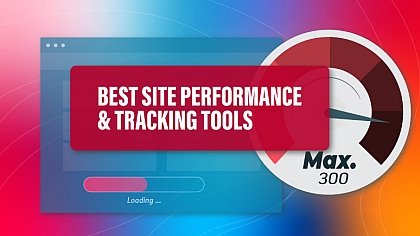
Complete Guide to for Building Amazing WordPress Websites
WordPress, one of the most popular website creation tools, offers both individuals and businesses a flexible and user-friendly choice. WordPress enables users to build beautiful and useful websites without coding knowledge thanks to its wide selection of themes, plugins, and customization possibilities.
In this thorough tutorial, we'll go through the essential techniques and best practices for constructing attractive WordPress sites that engage visitors and provide results.
Planning and Preparation
Before diving into the actual website development process, take the time to plan and prepare. Define your website's goals, target audience, and unique selling points. Conduct market research to understand the trends and preferences of your audience. Outline the website's structure, content, and features.
Implementing the Proper Theme
Your website's style and functionality are built on the theme you choose. Look for a theme that complements the style of your brand, has the required customization possibilities, and is responsive across all devices. Premium themes frequently offer more sophisticated features and qualified assistance.
Making Changes to Your Website
You may make your website distinctive and suited to your brand by customizing it. Personalize the layout, typeface, and colour scheme to produce a seamless aesthetic effect. For further versatility, use the theme's customization features or think about utilizing a page builder plugin.
Content Creation and Organization
Compelling content is key to engaging your audience and conveying your message effectively. Produce material that is of the highest calibre, is visually appealing, and includes text, photographs, videos, and infographics. Make it simple for users to explore your site and locate the information they need by organizing your material logically and naturally.
Plugins and Functionality
WordPress has a sizable plugin library that improves the functionality of your website. Install plugins for essential features such as contact forms, SEO optimization, social media integration, and site security. Be cautious not to overload your website with unnecessary plugins that can slow it down.
Optimizing your site for search engines
To increase your website's exposure in search engine results, you must implement search engine optimization (SEO) strategies. Improve the headers, meta tags, and URLs on your website. Conduct keyword research and then incorporate relevant keywords into your writing. Install an SEO plugin to help streamline the optimization process.
Mobile Responsiveness
In today's mobile-centric world, ensuring your website looks and functions seamlessly across different devices is essential. Choose a responsive theme and regularly test your website's responsiveness on various screen sizes. Image and other media optimization for quicker mobile device loading.
User Experience (UX) Design
A satisfying user experience is essential for keeping people on your website and motivating them to explore it further. Pay attention to factors such as page load speed, intuitive navigation, clear calls-to-action, and accessibility features. Regularly test and refine your website's UX to improve engagement and conversions.
Regular Maintenance and Security
Maintain your website's performance and security through regular updates, backups, and monitoring. Update your WordPress core, themes, and plugins to benefit from new features and security patches. Regularly create backups of your website to guard against data loss. Install security plugins to safeguard against cyber threats.
Testing and Optimization
Continuously test and optimize your website to improve its performance and user experience. Conduct usability testing to gather feedback from real users and make informed design decisions. Utilize analytics software to keep tabs on user behaviour, conversion rates, and problem areas.
Analytics and Observation
Utilize monitoring and analytics tools to learn more about the functionality and user behaviour of your website. Track website traffic, user interaction, and conversion rates with programs like Google Analytics. Utilize data analysis to identify development opportunities and to direct your actions.
Integrating Social Media
Integrate social media buttons and sharing options on your website to encourage visitors to share your content and engage with your brand on social platforms. This helps increase brand exposure and drive traffic to your website. Consider displaying your social media feeds or testimonials to showcase your online presence and build credibility.
Enhancing Website Speed
Improve the speed at which your website loads for a quick and easy user experience. Compress images, minimize CSS and JavaScript files, and leverage caching plugins to improve load times. In addition to improving user experience, a website that loads quickly performs better in search results.
Setting up SSL Security
Use SSL (Secure Sockets Layer) encryption to safeguard your website's security and the privacy of your visitors' personal information. This protects sensitive information exchanged between your website and users, such as login credentials and payment details. An SSL certificate also boosts the trust and credibility of your website.
Creating Engaging Calls-to-Action
Use compelling and strategically placed calls-to-action (CTAs) to guide visitors toward desired actions. Whether it's signing up for a newsletter, making a purchase, or requesting a consultation, well-designed CTAs prompt users to take action. Make them visually appealing, concise, and aligned with your overall design.
Optimizing for Local SEO
Your website should be optimized for local SEO if your company has a special geographic focus. You can hire an SEO Consultant for the best results. For SEO Services in Sydney, you can contact Nirmal Web Studio. You must include location-specific keywords in your content, metadata, and URL structure. To increase your company's visibility in local search results, register it on Google My Business and other local directories.
Regularly Updating Content
Fresh and relevant content not only attracts visitors but also keeps them coming back for more. Regularly update your website with new blog posts, product updates, or industry news. Provide value to your audience through informative and engaging content, positioning yourself as an authority in your niche.
Engaging with Your Audience
Encourage interaction and engagement by incorporating features such as comments, ratings, and reviews. Respond to comments and engage with your audience to build a sense of community and trust. This fosters loyalty and encourages visitors to become loyal customers.
A/B Testing and Conversion Optimization
Optimize your website's conversion rate by conducting A/B tests to compare different design elements, layouts, or CTAs. Test different variations and analyze the results to make data-driven decisions and improve your website's effectiveness in converting visitors into customers.
Continuous Learning and Adaptation
Web design and digital marketing landscapes are constantly evolving. Keep abreast of the most recent trends, innovations, and industry best practices. Join online communities, attend webinars, and read industry blogs to expand your knowledge and enhance your skills.
Creating a stunning WordPress website goes beyond aesthetics. It necessitates meticulous preparation, thoughtful creation, and constant improvement. You can build a website that not only looks beautiful but also provides an outstanding user experience, attracts visitors, and helps you reach your business objectives by putting the advice and best practices recommended in this guide into practice. Start your WordPress web design journey today and unlock the full potential of your online presence.














